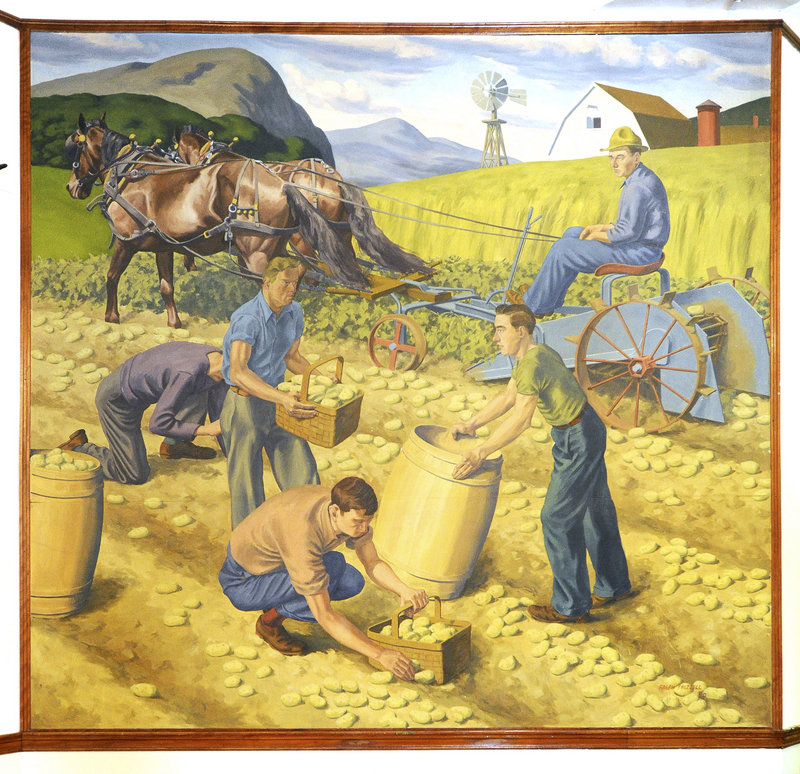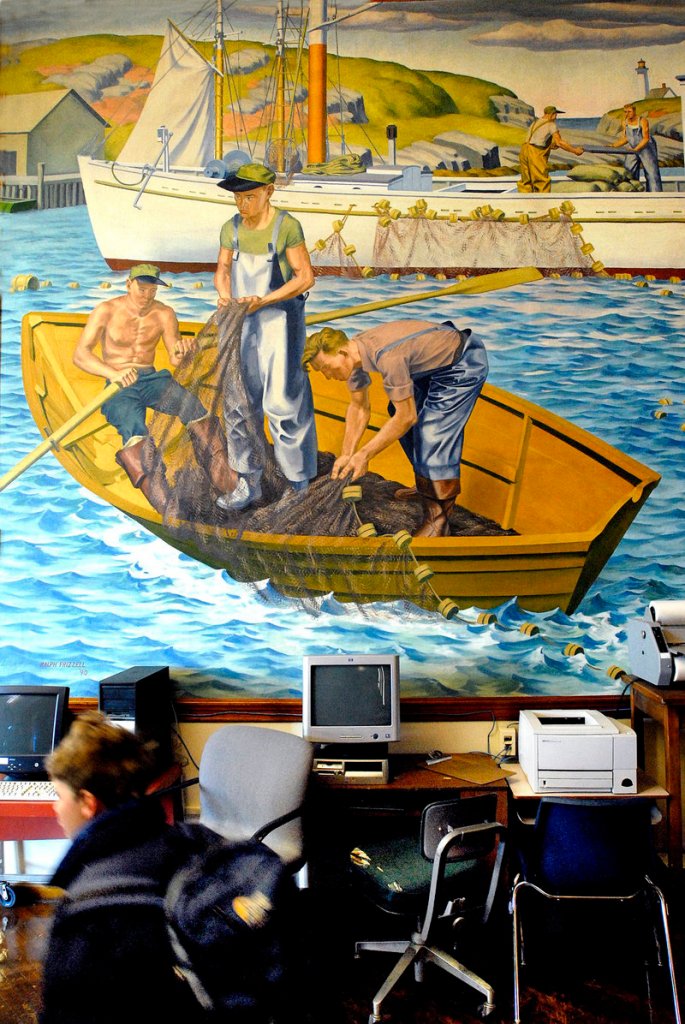This mural story will have a happy ending.
Two Depression-era murals that were removed last year from the now-closed Nathan Clifford Elementary School in Portland are in Boston for conservation and will be installed in February at Portland’s new Ocean Avenue Elementary School.
“They are going to go right in the main hallway by the stairs,” said Ocean Avenue Principal Beverly Coursey. “When the architects designed this school, they designed it with the murals in mind. They are just the right size for the space that we have available.”
Ralph Frizzell, a Portland painter, made the paintings in 1940. One, titled “Fishing,” depicts three men in a dory tending nets. The other is called “Farming,” showing a family of potato farmers in northern Maine.
Both are about 12 feet square, and full of bright colors and realistic depictions of men at work in traditional Maine industries.
The fate of the murals stands in contrast to the infamous labor mural that Gov. Paul LePage ordered removed last year from the Department of Labor’s headquarters in Augusta. That multi-panel mural, by the Maine painter Judy Taylor, is believed to be in storage in Augusta, awaiting a court ruling over its future.
LePage ordered its removal because he perceived it to represent political statements about labor and labor unions.
Portland historian Herb Adams said the Frizzell murals are important because of the era of their creation and the way they portray Maine workers.
“The mural of farming draws you over the top of the hill deep into Maine and into your imagination,” he said. “Frizzell was an excellent craftsman and a good example of New Deal art.”
And a bit left-leaning politically, Adams noted.
“Ralph Frizzell was a dashing, somewhat Bohemian figure, a dapper dresser who wore a real artist beret, lived in his studio and flirted with socialism,” he said. “Sadly, Frizzell died young, in his 30s, in 1943 while working as a clerk in the South Portland shipyards.”
The federal government created the New Deal Works Progress Administration during the Depression to help put Americans back to work. As part of that effort, the government employed artists to create art for public buildings. From 1935 to 1943, New Deal artists created more than 200,000 works of art.
The murals at the Nathan Clifford School were among them. The school opened in the early 1900s and closed last year, replaced by Ocean Avenue. Conservationists from the Williamstown Art Conservation Center removed the murals and took them to Massachusetts, where they are getting much-needed attention, said Coursey, the school principal.
“They needed to be cleaned and restored,” she said. “They especially needed to be cleaned. They were very dirty.”
Art conservators will install the murals at the new school in February, most likely during school vacation week, she said.
“We’re really happy they are coming over. The kids will be able to see them every day, and it’s going to feel great to bring part of Nathan Clifford to Ocean Avenue,” Coursey said. “When we closed Clifford, we had an open house to say goodbye to the building. A lot of alumni mentioned remembering the paintings. They are wonderful depictions of historic scenes in Maine. People feel connected to them.”
Adams characterized the murals as among Frizzell’s most important creations.
“They were his largest known works and among his very last,” Adams said. “If he lived longer, I am confident his reputation would be greater. But it shows the fragility of the New Deal legacy and its public art works. Art is fragile, and so is memory. Both are at risk.”
Staff Writer Bob Keyes can be contacted at 791-6457 or at: bkeyes@pressherald.com
Twitter: pphbkeyes
Send questions/comments to the editors.




